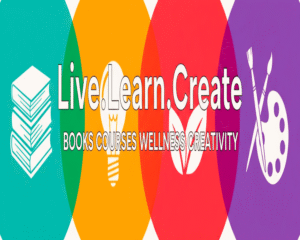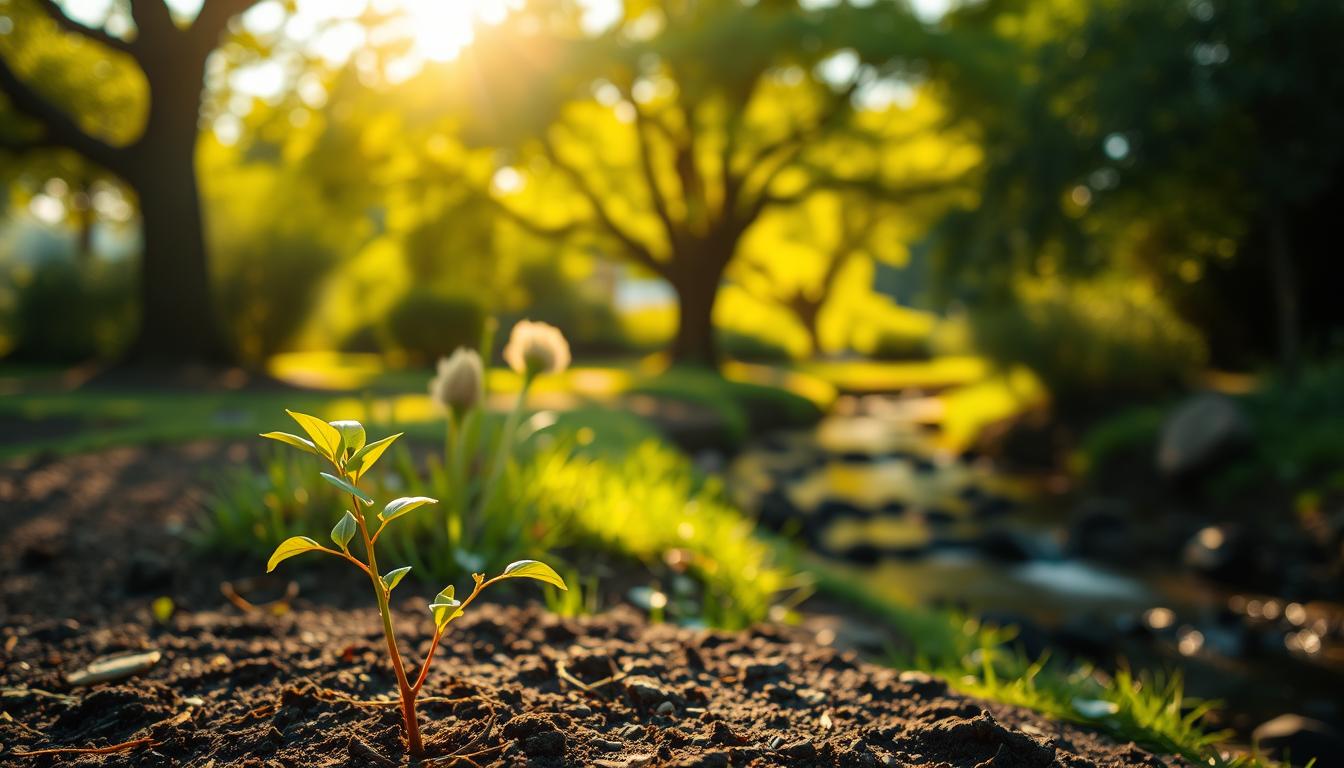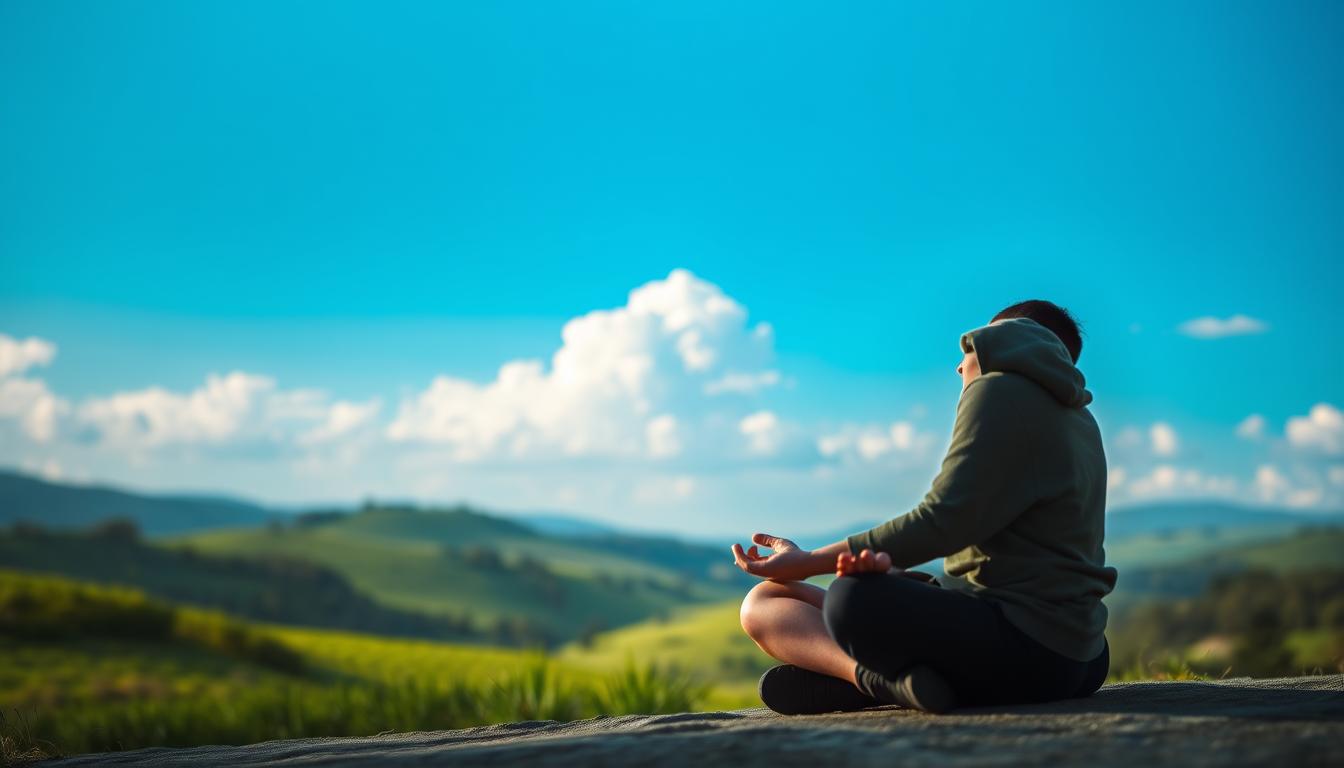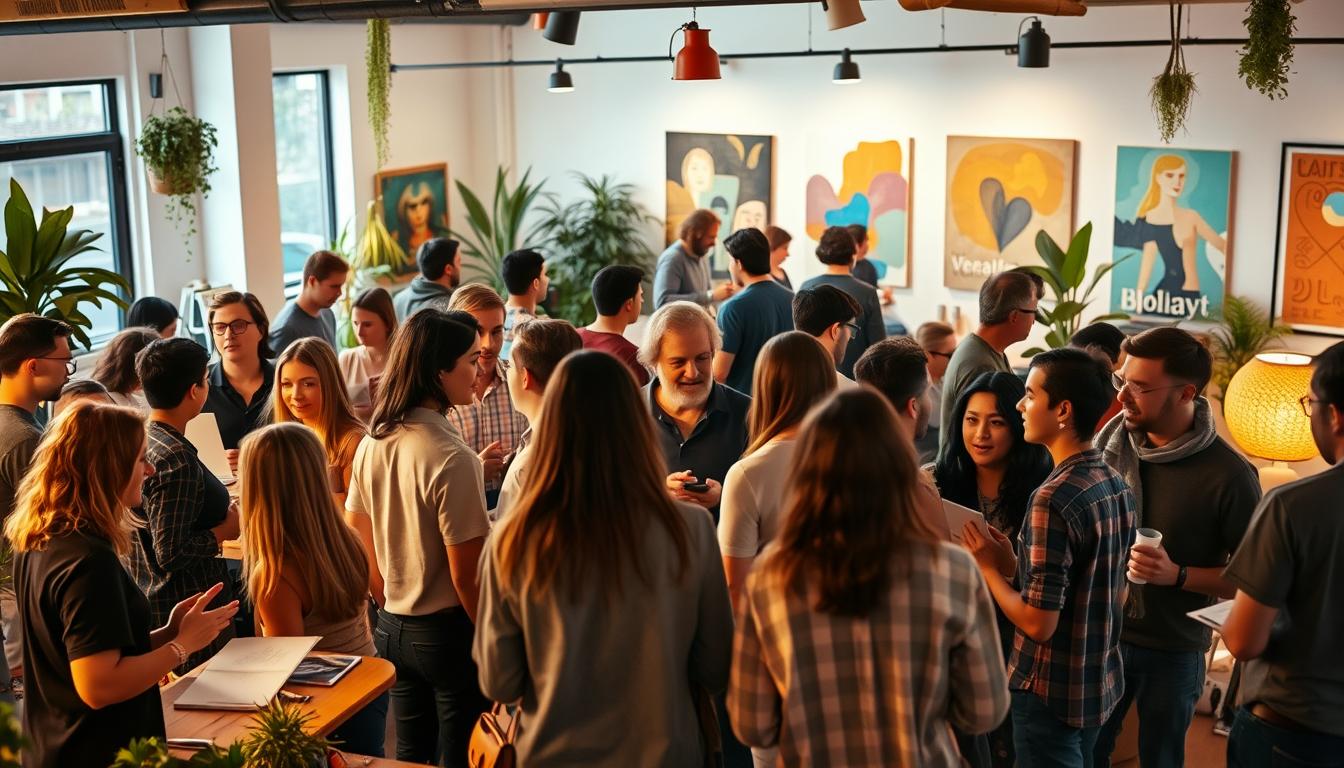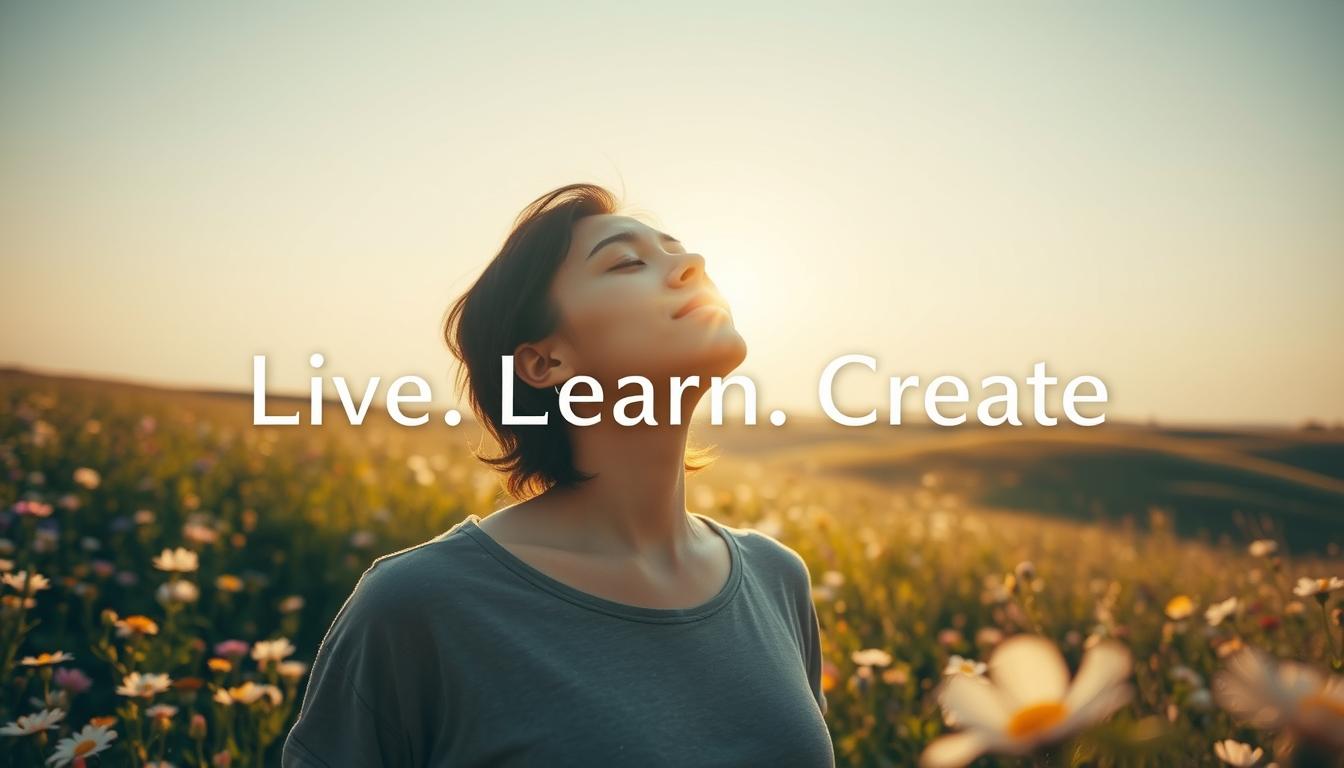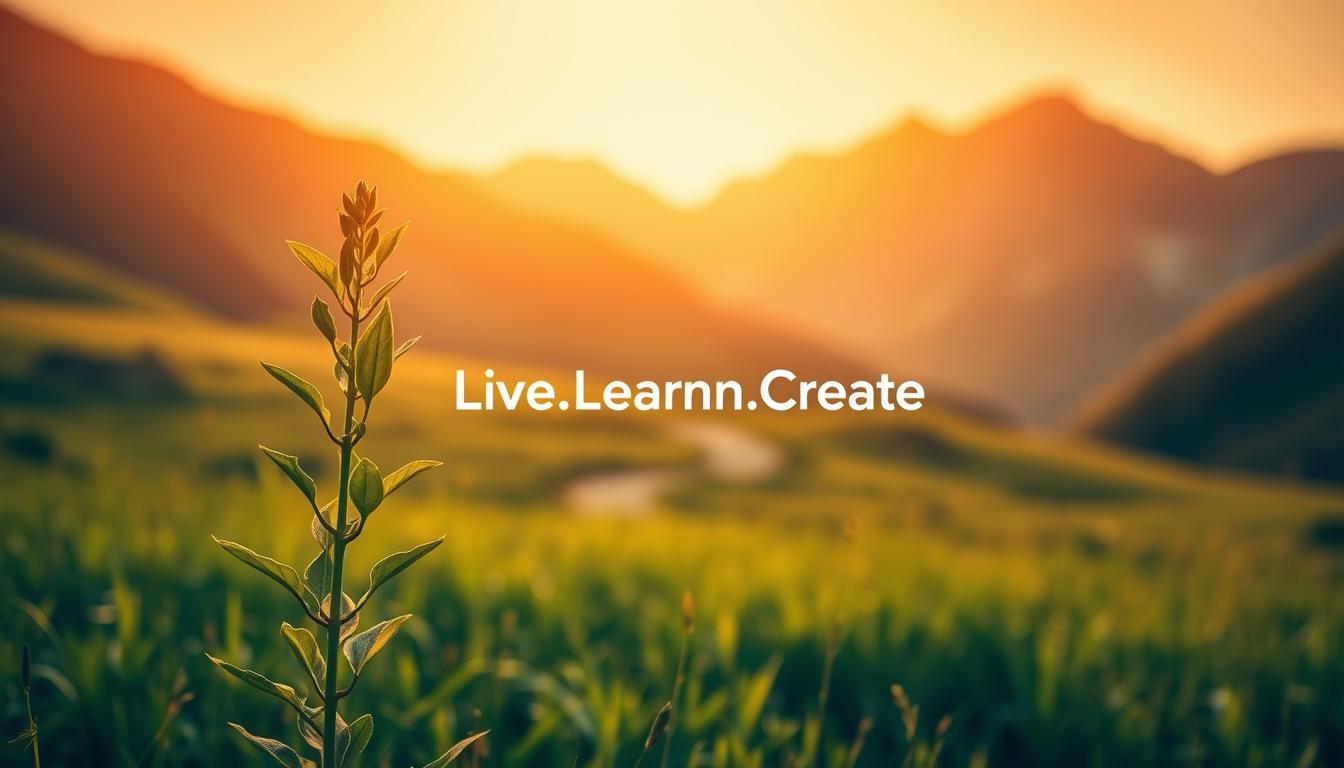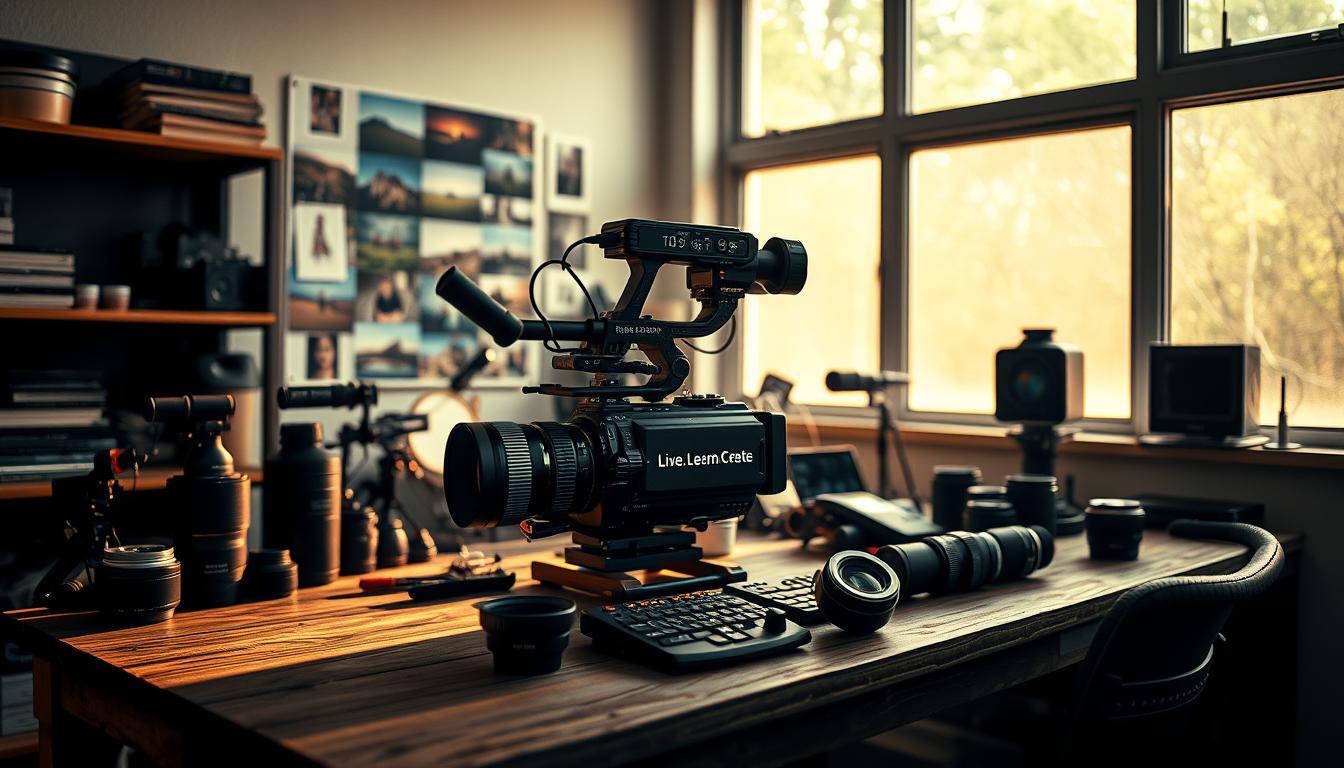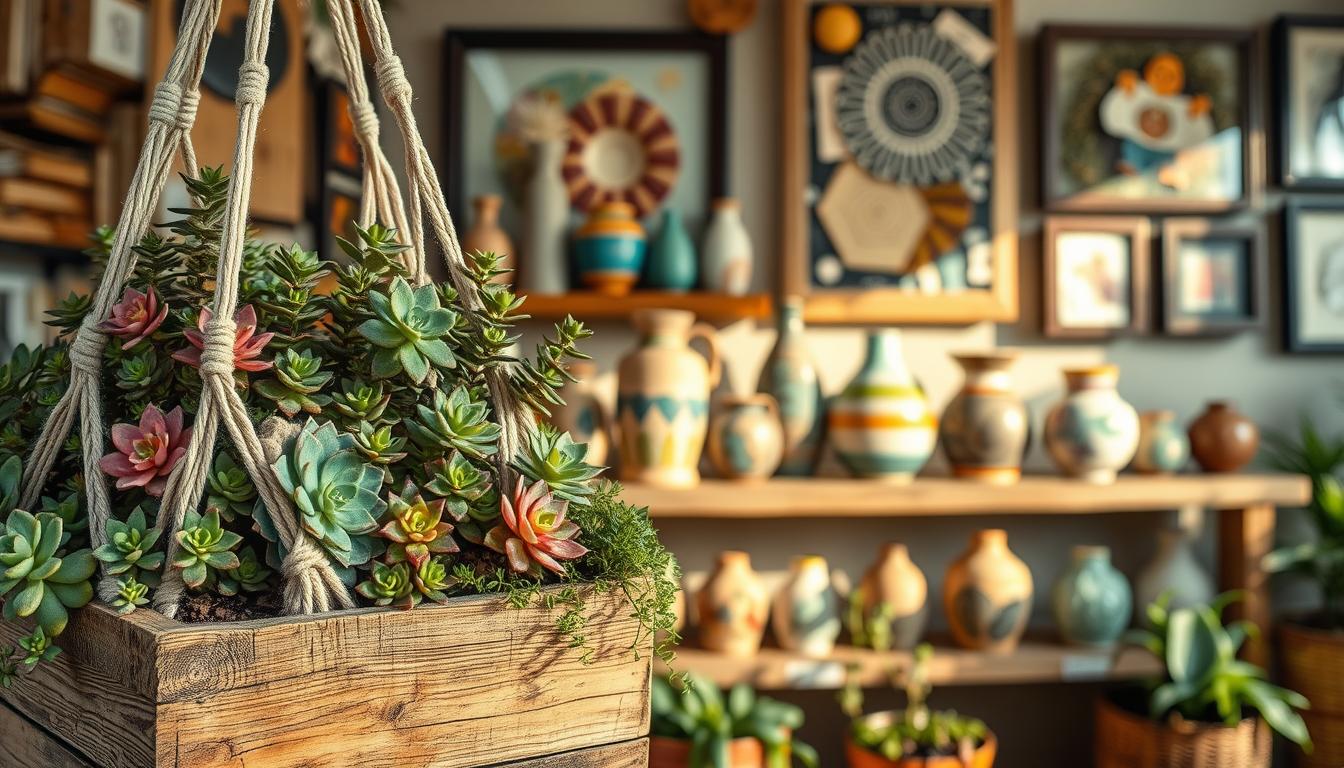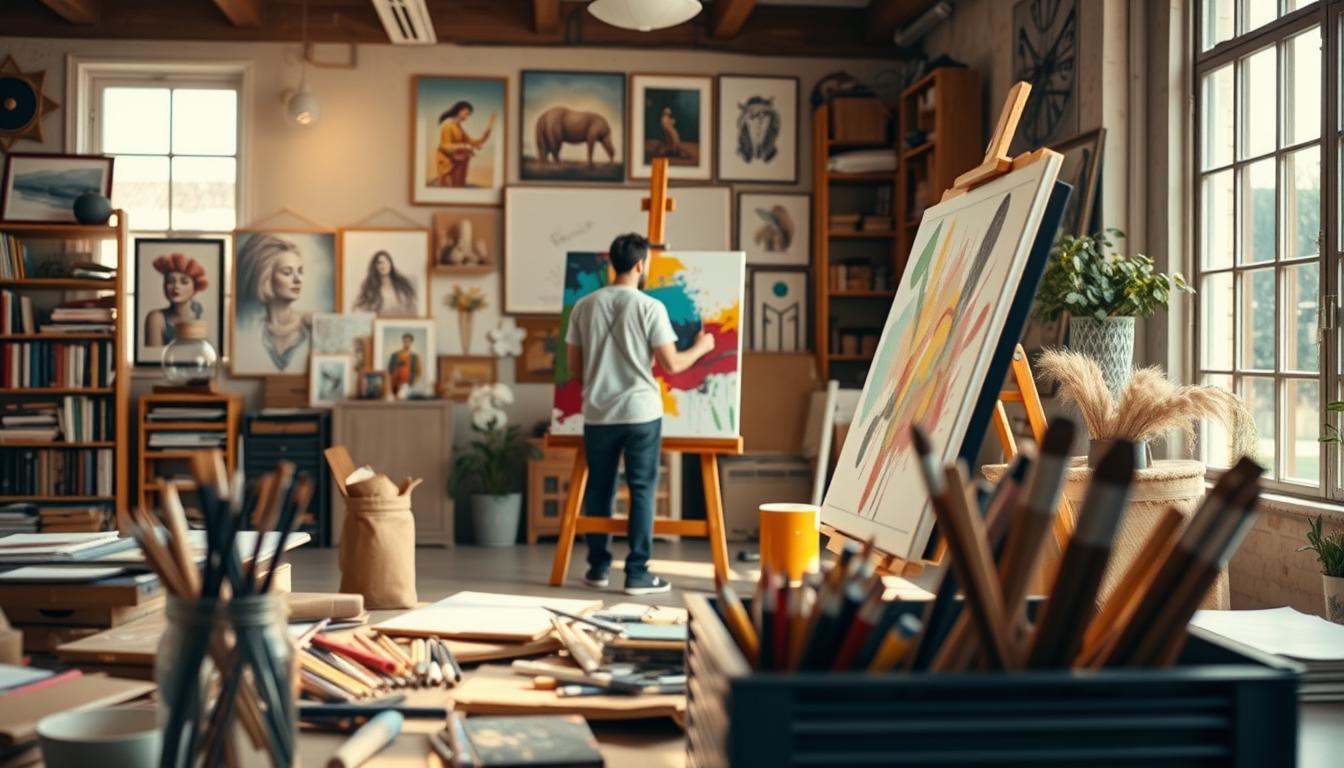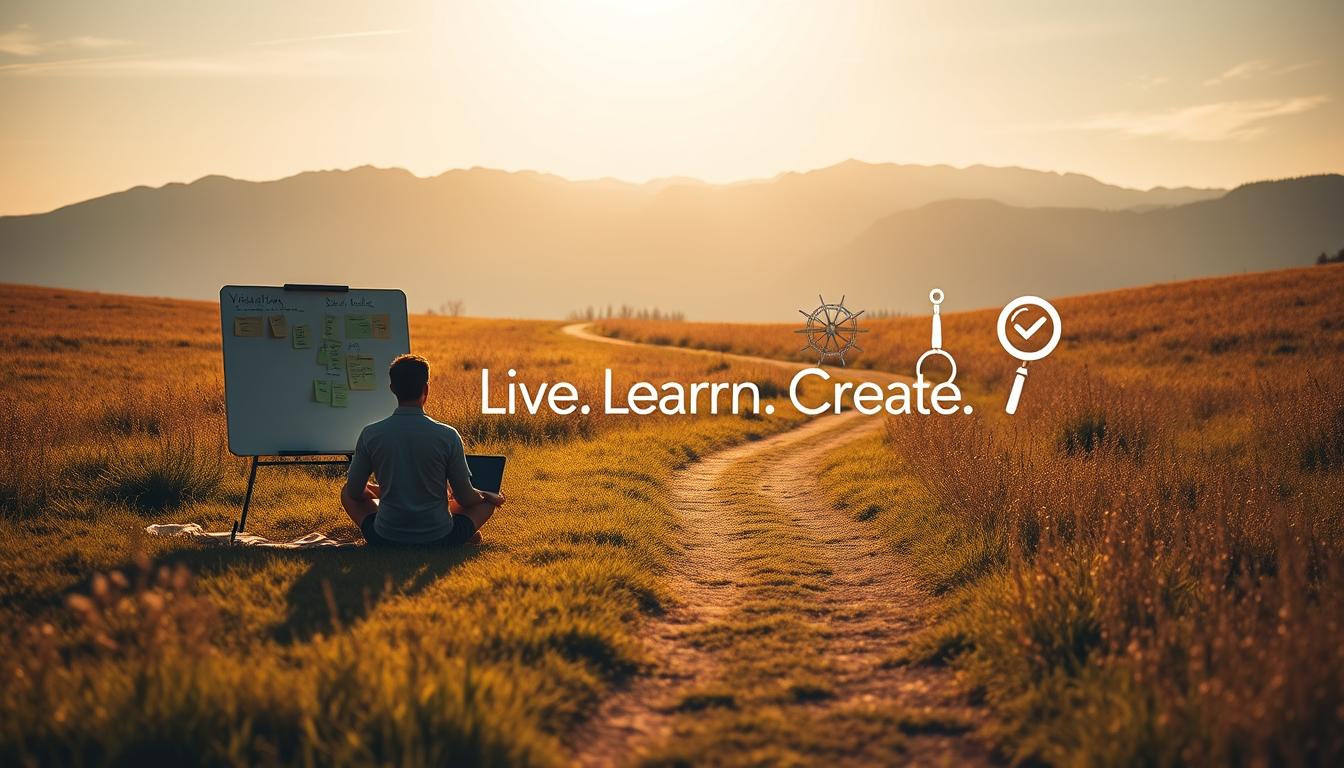
Did you know that curiosity is the driving force behind human development, leading to remarkable discoveries and innovations throughout history? This innate desire for exploration and learning is fundamental to our nature, shaping our understanding of the world and ourselves.
As we journey through life, cultivating curiosity can become a powerful tool for personal growth, helping us uncover new experiences and gain deeper insights into our purpose. By embracing this trait, we can transform everyday moments into opportunities for learning and self-discovery, ultimately leading to a more fulfilling life.
Key Takeaways
- Curiosity drives human development and innovation.
- Cultivating curiosity enhances personal growth.
- Embracing curiosity transforms everyday experiences into learning opportunities.
- Curiosity helps uncover new experiences and insights.
- It leads to a more fulfilling life.
Ready to start building a life you love? Visit https://livelearncreate.blog for more inspiration, tools, and guides on personal growth.
The Nature of Curiosity
Curiosity is a fundamental aspect of the human experience, driving us to explore and understand our world. It’s a trait that manifests in various ways throughout our lives, from the curiosity-driven exploration of infancy to the more focused inquiries of adulthood.
Defining Curiosity in Human Experience
Curiosity is common in human beings at all ages, from infancy through adulthood. Research has shown that curiosity is not a fixed attribute amongst humans but rather can be nurtured and developed over time and years. According to Jean Piaget, children develop hypotheses, conduct experiments, and then reassess their hypotheses depending on what they observe, contributing to their intellectual development.
This process of inquiry is fundamental to how we learn and grow, making curiosity an essential component of the human experience. As we navigate through life, curiosity continues to play a crucial role in our ability to adapt and evolve.
The Evolutionary Purpose of Curiosity
Curiosity has an evolutionary purpose, driving humans to explore their environment, seek out new experiences, and learn from them. This innate curiosity has been crucial for the survival and advancement of humanity, encouraging innovation and progress.
By being curious, humans have been able to adapt to changing environments and circumstances, ensuring the continuation of the species. Curiosity, therefore, is not just a trait but a vital mechanism for human evolution and development.
Curiosity Across the Lifespan
Curiosity manifests differently throughout our life, beginning with the wide-eyed wonder of infancy as babies explore their environment through touch, taste, and sight. As we grow, so does the nature of our curiosity.
- Young children embody curiosity in its purest form—asking endless questions, experimenting fearlessly, and absorbing information at remarkable rates as they build their understanding of the world.
- During adolescence, curiosity often becomes more focused and identity-driven, as young people explore potential passions, values, and future paths with increasing independence.
- Adults tend to have more specialized and purpose-driven curiosity, though maintaining childlike wonder becomes increasingly valuable for continued growth and creativity.
- Even in our later years, curiosity serves as a powerful force for cognitive health, social connection, and finding meaning—research suggests that maintaining an active, questioning mind may help protect against cognitive decline.
By understanding and embracing curiosity across different stages of life, we can foster a more inquiring and growth-oriented mindset, leading to a more fulfilling and meaningful existence.
The Science Behind Curiosity
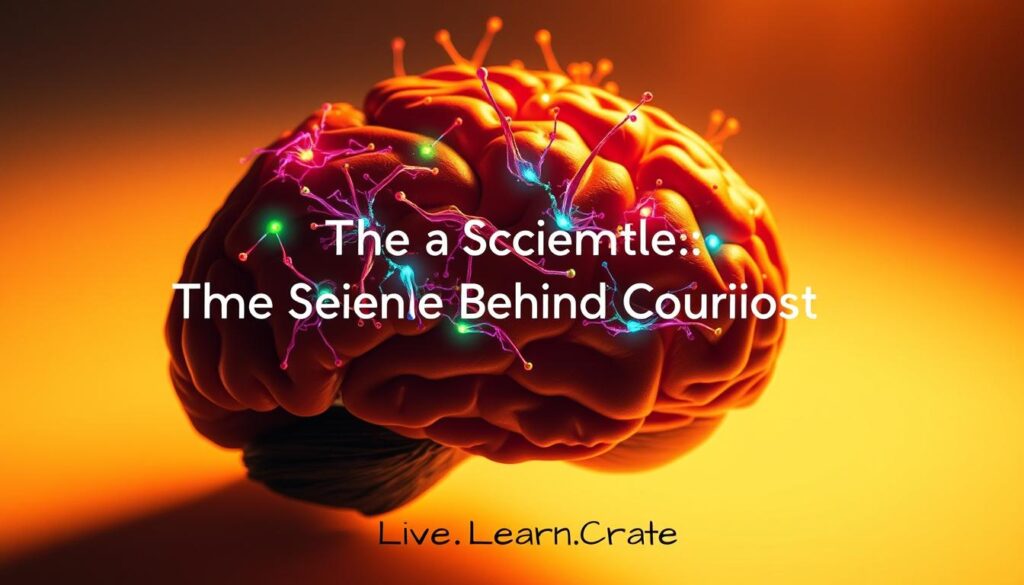
Delving into the science of curiosity, we uncover the biological underpinnings that drive our desire for knowledge. Curiosity is not just a trait; it’s a complex neurological function that plays a crucial role in our learning and memory.
Neurological Foundations of Curiosity
The brain’s reward system is closely linked to curiosity. When we encounter novel or unfamiliar stimuli, our brain’s reward circuitry is activated, releasing dopamine—a neurotransmitter associated with pleasure and motivation. This neurological response encourages us to explore and learn more about our environment.
Curiosity is also closely tied to the brain’s default mode network, which is responsible for mind-wandering and daydreaming. When we’re in a state of curiosity, our default mode network is active, allowing us to make connections between seemingly unrelated pieces of information.
The Dopamine Connection: Curiosity and Reward
The release of dopamine in response to novel stimuli is a key driver of curiosity. This neurotransmitter not only motivates us to seek out new information but also enhances our memory for the information we encounter. As a result, we’re more likely to remember details related to the object of our curiosity.
- Neuroscience research has shown that information learned during states of high curiosity is better encoded and retained in long-term memory.
- The hippocampus, our brain’s memory center, is activated when we’re curious, preparing it to encode new information more effectively.
- The relationship between curiosity and memory is bidirectional: curiosity enhances memory, and memory supports curiosity by helping us identify knowledge gaps.
How Curiosity Enhances Memory and Learning
Curiosity has a profound impact on our ability to learn and retain information. When we’re curious, we’re more attentive and engaged, which enhances our memory for the information we encounter. This is because curiosity activates the hippocampus, making it more receptive to new information.
Moreover, the “curiosity halo effect” suggests that even information unrelated to the object of our curiosity can benefit from this memory boost if encountered during a state of heightened curiosity. By cultivating curiosity before learning important information, we can significantly improve our retention and recall.
Types of Curiosity That Drive Personal Growth
Understanding the diverse forms of curiosity can unlock new pathways to personal development. As we explore the different facets of curiosity, we begin to see how they contribute to our growth as individuals.
Epistemic Curiosity: The Thirst for Knowledge
Epistemic curiosity refers to our desire for knowledge and understanding. It’s the driving force behind our pursuit of learning and intellectual exploration. This type of curiosity is essential for personal growth, as it encourages us to seek out new information and expand our understanding of the world.
By cultivating epistemic curiosity, we can develop a deeper appreciation for the complexities of life and foster a love of learning that lasts a lifetime.
Perceptual Curiosity: Exploring the Senses
Perceptual curiosity involves our senses and our desire for new experiences. It’s about exploring the world around us and discovering new sensations. This type of curiosity is vital for personal growth, as it helps us stay engaged with our environment and appreciate its beauty.
By embracing perceptual curiosity, we can enrich our lives with new experiences and deepen our connection to the world around us.
Specific vs. Diversive Curiosity
The distinction between specific and diversive curiosity offers valuable insights into our information-seeking behaviors. Specific curiosity is focused on filling particular knowledge gaps, such as understanding how a specific mechanism works or seeking the answer to a defined question. On the other hand, diversive curiosity represents a broader hunger for stimulation and novelty, leading us to explore new areas without a specific goal in mind.
Both types of curiosity serve important functions: specific curiosity helps us develop expertise and solve problems, while diversive curiosity prevents stagnation and exposes us to unexpected opportunities and connections. In our digital age, recognizing the difference between these types can help us understand when we’re genuinely learning versus merely distracting ourselves.
Personal growth benefits from a balanced approach—cultivating focused specific curiosity for depth while allowing enough diversive curiosity to maintain breadth of knowledge and experience. By embracing both forms, we can foster a rich and dynamic process of learning and exploration that supports our ongoing development.
The Curiosity Paradox: Why We Seek and Avoid Information
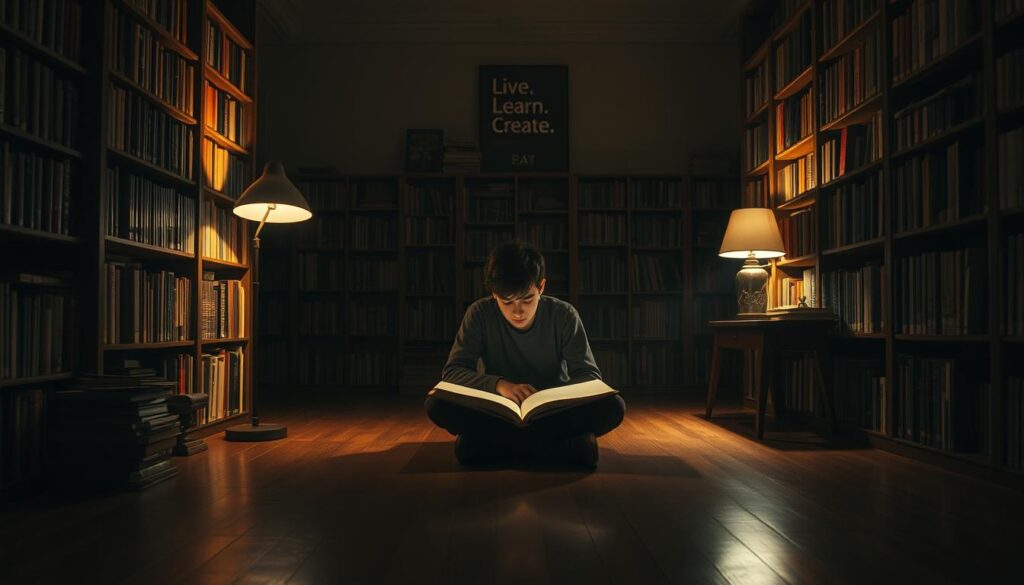
The human experience is marked by a contradictory desire for exploration and a fear of the unknown. On one hand, curiosity drives us toward new experiences and knowledge; on the other, we’re held back by the fear of uncertainty and potential dangers. This tension creates what psychologists call the “curiosity paradox” – we’re drawn to explore yet hesitant to leave the safety of the known.
The Information Gap Theory
The Information Gap Theory suggests that curiosity arises when we perceive a gap between what we know and what we want to know. This gap creates a sense of discomfort or tension, motivating us to seek out information to fill it. As we close the gap, we experience a sense of satisfaction or pleasure. However, if the gap is too large, it can lead to feelings of overwhelm or anxiety, causing us to avoid the information altogether.
“The key to harnessing curiosity lies in finding the right balance between what’s familiar and what’s new,” as it allows us to navigate the unknown with a sense of comfort and confidence.
Optimal Arousal and the Goldilocks Effect
The Optimal Arousal theory explains that we’re motivated to maintain a pleasurable level of arousal through exploratory behaviors. When we encounter something novel or complex, our arousal increases. If it’s too much, we might feel overwhelmed; if it’s too little, we might feel bored. The “Goldilocks Effect” comes into play here – we seek out experiences that are “just right,” not too hot or too cold, but optimal for our curiosity and engagement.
- Gradually expanding our comfort zones through new experiences helps build confidence.
- Reframing the unknown as an opportunity rather than a threat shifts our relationship with uncertainty.
- Developing a tolerance for ambiguity is key to embracing curiosity more fully.
Overcoming Fear of the Unknown
To overcome the fear that holds us back, we need to develop strategies that make the unknown less daunting. By taking small steps into new territory, we can build our confidence and become more comfortable with uncertainty. As we grow, we begin to see that the unknown is not something to be feared but rather an opportunity for growth and discovery.
Ready to start building a life you love? Visit https://livelearncreate.blog for more inspiration, tools, and guides on personal growth.
Curiosity as a Catalyst for Personal Development
The path to self-discovery is paved with curiosity, leading us to explore uncharted territories within ourselves. As we embark on this journey, we begin to understand the profound impact of curiosity on our personal development.
Breaking Through Comfort Zones
One of the most significant ways curiosity fosters personal growth is by encouraging us to step beyond our comfort zones. By embracing the unknown, we open ourselves to new experiences and learning opportunities. This process helps in building confidence and developing a more adventurous spirit.
As we venture into unfamiliar territories, we discover new aspects of ourselves and our capabilities. This self-directed exploration is crucial for personal development, as it allows us to identify areas where we can improve and grow.
Cultivating a Growth Mindset Through Questioning
Curiosity is closely linked to the concept of a growth mindset, which is the belief that our abilities and intelligence can be developed through dedication and hard work. By adopting a curious mindset, we become more inclined to ask questions, seek feedback, and view challenges as opportunities for growth.
This mindset is cultivated through the practice of questioning our assumptions and seeking out new knowledge. As we do so, we foster a deeper understanding of ourselves and the world around us, leading to more meaningful personal development.
From Curiosity to Self-Discovery
The journey from curiosity to self-discovery is a powerful one. It involves turning our curiosity inward, exploring our thoughts, feelings, and motivations. This self-directed curiosity leads to profound insights and a greater sense of purpose.
Through this process, we often uncover hidden strengths and unacknowledged values that guide us toward more fulfilling life choices. The act of exploring our inner selves with curiosity rather than judgment creates a compassionate space for growth and discovery.
To continue feeding your curiosity and exploring new ways to learn and grow, visit https://livelearncreate.blog.
The Role of Curiosity in Creative Thinking
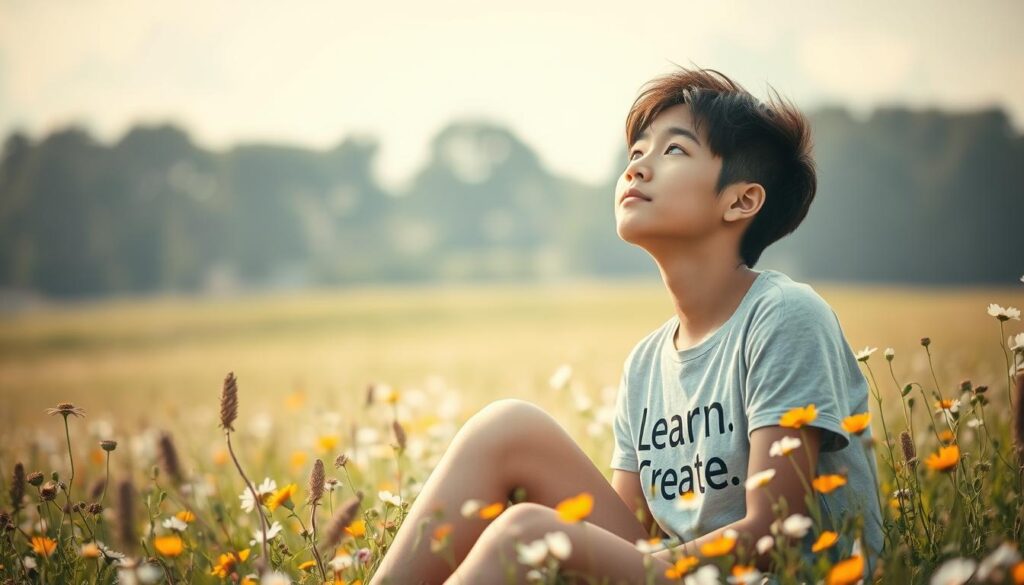
Curiosity is the spark that ignites the flame of creative thinking, leading to innovative breakthroughs. By embracing our innate curiosity, we open ourselves up to new experiences, ideas, and perspectives that can foster a more creative and innovative mindset.
Connecting the Dots Through Curious Exploration
Curiosity enables us to connect disparate ideas and concepts through exploration. When we are curious, we are more likely to ask questions, seek out new information, and explore different perspectives, all of which are essential for creative thinking.
- Exploring different subjects and interests can help us identify novel connections and relationships.
- Curiosity-driven exploration can lead to new insights and understanding, fostering a more creative approach to problem-solving.
The Foundation of Innovation
Curiosity is the foundation upon which innovation is built. By being curious, we are driven to experiment, take risks, and push beyond the boundaries of what is known, leading to new discoveries and innovations.
For instance, scientists have made numerous breakthrough discoveries by being curious about the world around them. The discovery of penicillin by Alexander Fleming is a classic example of how curiosity can lead to significant advancements in science.
Case Studies: Curiosity Leading to Breakthroughs
Throughout history, many significant discoveries have been the result of curiosity rather than deliberate problem-solving. For example, Percy Spencer’s observation of a melted chocolate bar near a magnetron led to the invention of the microwave oven.
- Einstein’s scientific accomplishments were attributed to his passionate curiosity, demonstrating the power of curiosity in driving innovation.
- The Mars rover “Curiosity” exemplifies how this human trait drives our exploration beyond Earth, expanding our understanding of the universe.
- In medicine, curious observations about unexpected side effects have led to new treatments, such as the development of Viagra for heart conditions.
These examples illustrate the importance of maintaining an open and questioning mind, even in highly specialized fields, to create conditions for serendipitous discoveries that might not be achieved through planned research alone.
Looking for a spark of inspiration? Find your creative fuel at https://livelearncreate.blog.
Curiosity and Emotional Intelligence
The intricate dance between curiosity and emotional intelligence is what sets the stage for profound self-awareness. As we explore our emotional landscapes, curiosity emerges as a guiding force that enhances our ability to understand and navigate our emotions.
Emotional intelligence begins with self-awareness—the ability to recognize and understand our own emotional states, triggers, patterns, and needs. Introspective curiosity—turning our questioning mind toward our internal experiences—provides the foundation for developing this crucial self-awareness.
Developing Empathy Through Curious Inquiry
Curiosity fosters empathy by encouraging us to ask questions and seek understanding in our interactions with others. By being genuinely interested in people’s experiences and emotions, we can develop a deeper connection and understanding.
- Ask open-ended questions to encourage sharing.
- Practice active listening to understand others’ perspectives.
- Show genuine interest in others’ experiences.
Curiosity as a Tool for Conflict Resolution
In conflicts, curiosity can be a powerful tool. By approaching conflicts with a curious mindset, we can uncover underlying issues and work towards resolutions that satisfy all parties.
Curiosity allows us to explore different perspectives and understand the root causes of conflicts, leading to more effective and lasting resolutions.
Self-Awareness Through Introspective Curiosity
Introspection guided by curiosity helps us understand our emotions, needs, and patterns. By regularly asking ourselves curious questions like “What am I feeling right now?” or “What need is behind this behavior?”, we develop the emotional vocabulary and self-understanding that forms the foundation of emotional intelligence.
For more on mindfulness and personal growth, visit https://livelearncreate.blog. Cultivating curiosity and self-awareness is a journey that leads to a more mindful and fulfilling life.
The Dark Side of Curiosity
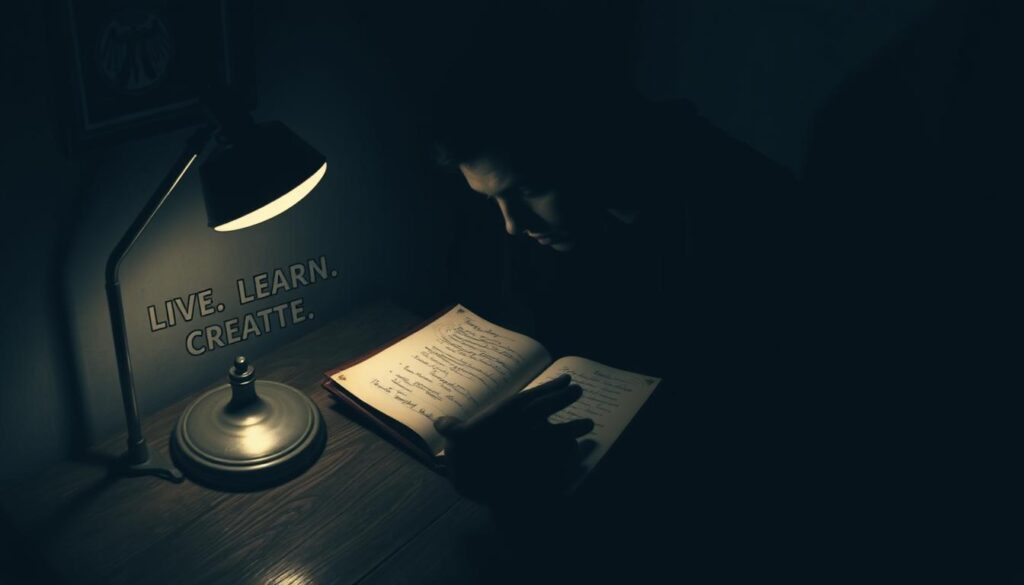
While curiosity is often celebrated as a driving force behind innovation and personal growth, it also has a lesser-known darker side that can impact our productivity. As we explore the complexities of curiosity, it’s essential to acknowledge both its benefits and its potential drawbacks.
When Curiosity Becomes Distraction
One of the primary challenges of curiosity is its potential to become a distraction. In today’s digital age, we’re constantly bombarded with information and stimuli that can pique our interest. This can lead to a state of continuous partial attention, where we divide our focus among multiple tasks and never fully concentrate on any one thing. To manage this, it’s crucial to develop strategies that help maintain focus and balance in our daily lives.
By setting clear boundaries and designating specific times for exploration and discovery, we can harness the power of curiosity without letting it control our attention. This involves cultivating metacognitive awareness – the ability to recognize when curiosity is serving our goals versus when it’s becoming a distraction.
Information Overload in the Digital Age
The digital age has brought about an unprecedented amount of information at our fingertips. While this can be a boon for curious individuals, it also poses the risk of information overload. When we’re exposed to too many stimuli, our ability to process and retain information can be impaired. It’s essential to develop strategies for filtering and prioritizing the information we consume.
Balancing Healthy Curiosity with Focus
So, how can we strike a balance between nurturing our curiosity and maintaining focus? The key lies in creating a structured approach to exploration and learning. This can involve scheduling specific “curiosity time” for open-ended exploration, using techniques like time-blocking to protect focused work periods, and establishing clear criteria for when to follow curiosity versus when to maintain focus.
By adopting this balanced approach, we can reap the benefits of curiosity’s expansive nature while still developing the depth of knowledge and skill that comes from sustained attention and practice. This balance is crucial for productivity and learning in both personal and professional contexts.
- Cultivate metacognitive awareness to recognize when curiosity is serving your goals.
- Schedule specific times for open-ended exploration and discovery.
- Use time-blocking to protect focused work periods.
- Establish clear criteria for when to follow curiosity versus when to maintain focus.
Curiosity in Professional Development
In today’s fast-paced professional landscape, curiosity is the unsung hero of career advancement. As professionals navigate their careers, cultivating curiosity can be the key differentiator that sets them apart from their peers.
Curiosity drives professionals to seek out new challenges, ask questions, and explore unconventional solutions. This mindset not only enhances personal growth but also contributes to a more dynamic and innovative organization.
How Curious Professionals Stand Out
Curious professionals are more likely to stand out in their careers due to their proactive approach to learning and development. They don’t just accept tasks at face value; instead, they inquire about the underlying reasons and potential improvements. This not only demonstrates their engagement but also showcases their ability to think critically.
- They seek out new challenges and opportunities for growth.
- They ask insightful questions that demonstrate their understanding and curiosity.
- They are open to feedback and use it as a tool for continuous improvement.
Curiosity as a Leadership Quality
Curiosity is a vital trait for effective leaders. It enables them to stay ahead of the curve, anticipate changes, and make informed decisions. Curious leaders foster a culture of inquiry within their teams, encouraging experimentation and innovation.
By modeling curious behavior, leaders demonstrate that they value learning and are open to new ideas. This creates a positive environment where team members feel empowered to share their thoughts and suggestions.
Fostering a Culture of Curiosity in Organizations
Creating a culture of curiosity within an organization requires a multifaceted approach. It involves both structural elements, such as dedicated time for exploration, and social norms that celebrate questioning and intellectual humility.
Organizations can foster this culture by implementing practices like “curiosity time,” similar to Google’s 20% time, and by creating cross-functional learning opportunities. Recognizing and rewarding curious behavior also plays a crucial role in reinforcing this culture.
Ready to turn your passion into a project? Discover your purpose at https://livelearncreate.blog.
Practical Exercises to Cultivate Curiosity

By incorporating simple yet effective practices into our daily routine, we can significantly enhance our curiosity and overall personal growth. Cultivating curiosity is a journey that requires consistent effort and the right techniques. In this section, we’ll explore practical exercises designed to help you develop a more curious mindset.
The Five Whys Technique
The Five Whys Technique is a simple yet powerful method for delving deeper into any subject or problem. By asking “why” five times, you can uncover the underlying causes or motivations behind a particular issue. This technique encourages you to look beyond the surface level and explore the root of the matter, fostering a deeper understanding and sparking new ideas.
- Start with a question or problem you’re curious about.
- Ask “why” and answer it based on your current understanding.
- Repeat the process four more times, each time probing deeper.
- Reflect on your findings and consider how they might apply to other areas of your life.
Curiosity Journaling Practices
Keeping a curiosity journal can be a valuable tool for cultivating a more inquiring mindset. By regularly recording your thoughts, questions, and observations, you can track your progress and identify patterns in your curiosity. This practice helps to develop your ability to notice and appreciate the details around you, enhancing your overall observation skills.
To start curiosity journaling, dedicate a few minutes each day to writing down things that have caught your attention. This could include observations about nature, questions you have about the world, or insights you’ve gained from your experiences. Reflecting on these entries can help you see how your curiosity is growing and evolving.
Mindful Observation Exercises
Mindful observation exercises can significantly strengthen your perceptual curiosity by training your attention to notice details, patterns, and qualities that typically escape awareness. Practices such as the “beginner’s mind,” “sensory scavenger hunts,” “one square foot” exploration, and “curiosity photography” can help you develop a more nuanced understanding of the world around you.
- Practice the “beginner’s mind” by approaching familiar objects or environments as if seeing them for the first time.
- Engage in “sensory scavenger hunts” to direct your curiosity toward specific sensory experiences.
- Spend a few minutes exploring a small, defined area, noticing details you’d normally overlook.
- Use “curiosity photography” to challenge yourself to find and capture interesting aspects of ordinary subjects.
Regular practice of these exercises can rewire your attention patterns, making curious observation your default mode. This heightened perceptual curiosity enriches your everyday experience, provides raw material for creative thinking, and develops the observational skills that underlie many forms of expertise.
Feeling more present and calm is just the beginning. For more on mindfulness and personal growth, visit https://livelearncreate.blog.
Curiosity and Lifelong Learning
Nurturing our curiosity can have a profound impact on our lives, leading to new experiences and insights. As we journey through life, it’s essential to recognize the role that curiosity plays in our personal and professional growth.
By embracing curiosity, we can cultivate a love for learning that extends beyond formal education. This mindset allows us to approach life with a sense of wonder, exploring new ideas and environments that foster our growth.
Creating a Personal Learning Curriculum
Developing a personal learning curriculum is a powerful way to harness the power of curiosity. By identifying areas that spark our interest, we can create a tailored learning plan that aligns with our goals and aspirations.
This process involves setting clear objectives, seeking out relevant resources, and establishing a schedule for learning. By taking ownership of our educational journey, we can ensure that our curiosity is nurtured and directed towards meaningful pursuits.
The Connection Between Curiosity and Autodidacticism
Curiosity is closely linked to autodidacticism, as it drives us to seek out knowledge and understanding on our own terms. By embracing this self-directed approach to learning, we can explore topics in depth, developing a richer understanding of the subject matter.
Autodidacticism allows us to learn at our own pace, exploring areas that interest us and applying our knowledge in practical ways. This approach fosters a sense of autonomy and agency, as we take charge of our own educational journey.
Learning Communities That Foster Curiosity
While curiosity can flourish individually, it reaches new heights when nurtured within communities of like-minded learners. These communities provide a supportive environment where people can share ideas, explore new concepts, and learn from one another.
Effective learning communities strike a balance between structure and openness, providing enough framework to focus collective curiosity while remaining flexible enough to follow unexpected directions. By participating in such communities, we can enhance our learning, gain new insights, and develop meaningful connections with others.
To continue exploring the power of curiosity and lifelong learning, consider connecting with a community of like-minded individuals at https://livelearncreate.blog.
Overcoming Barriers to Curiosity
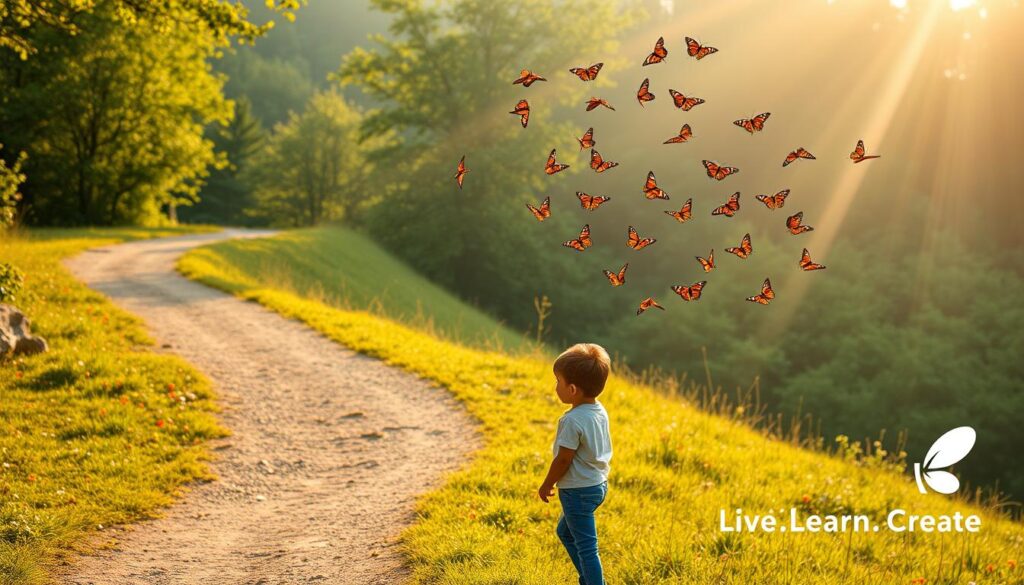
As we journey through life, various barriers can stifle our innate curiosity, hindering personal growth. Curiosity is a vital component of learning and development, but it can be suppressed by numerous factors. Understanding these barriers is crucial to overcoming them and fostering a culture of curiosity.
Cultural and Social Inhibitors
Cultural and social factors play a significant role in shaping our curiosity. Societal expectations, cultural norms, and family influences can either encourage or discourage curious behavior. For instance, some cultures may place a high value on conformity, potentially stifling individual curiosity. To overcome these inhibitors, it’s essential to recognize their presence and actively work towards creating an environment that supports exploration and inquiry.
By being aware of these cultural and social inhibitors, we can begin to break free from their constraints. This involves embracing a mindset that values curiosity and encourages questioning and exploration.
Addressing the “I Already Know” Mindset
The “I already know” mindset is a significant barrier to curiosity. When we believe we have all the answers, we close ourselves off to new experiences and knowledge. This mindset can stem from past successes, educational background, or simply a fear of appearing ignorant. To combat this, we must cultivate humility and recognize that there is always more to learn.
By adopting a growth mindset, we can shift our perspective and understand that learning is a continuous process. This involves being open to new ideas, seeking out diverse perspectives, and embracing challenges as opportunities for growth.
Rebuilding Curiosity After Educational Burnout
Many people experience educational burnout, where years of extrinsic motivation, standardized approaches, and emphasis on testing diminish their natural curiosity and love of learning. Rebuilding curiosity after such experiences requires reconnecting with intrinsic motivation—rediscovering what genuinely interests you when all external pressures and expectations are removed.
- Rebuilding curiosity involves a period of “decompression” from formal learning structures, followed by gentle exploration guided solely by what sparks genuine interest.
- Practical approaches include “curiosity sampling”—briefly exploring diverse topics without commitment until you find something that naturally pulls your attention—and “play learning” that emphasizes enjoyment over achievement.
- With patience and self-compassion, most people can gradually rebuild their natural curiosity, though the path and timeline vary significantly based on individual experiences.
By understanding the barriers to curiosity and implementing strategies to overcome them, we can reignite our passion for learning and foster a more curious and engaged approach to life.
Curiosity and Mindfulness: The Perfect Partnership
The fusion of curiosity and mindfulness offers a fresh perspective on how to approach life’s challenges with openness and awareness. By combining these two powerful practices, we can cultivate a deeper understanding of ourselves and the world around us, leading to a more fulfilling and meaningful life.
Beginner’s Mind: The Zen Approach to Curiosity
The concept of “beginner’s mind” in Zen Buddhism encourages us to approach experiences with freshness and openness, unencumbered by preconceptions. This mindset allows us to tap into our natural curiosity, exploring the world around us with a sense of wonder and awe.
By adopting a beginner’s mind, we can break free from the constraints of our habitual thinking patterns and engage with life more fully. This approach enables us to discover new aspects of ourselves and our surroundings, fostering personal growth and awareness.
Using Curiosity to Deepen Meditation Practice
When we bring curiosity into our meditation practice, we can transform it into a more engaging and insightful experience. By approaching our meditation with a sense of inquiry, we can explore our inner world with greater depth and understanding.
This mindful approach to meditation encourages us to observe our thoughts, emotions, and physical sensations with a non-judgmental attitude, allowing us to cultivate a greater sense of attention and clarity.
Mindful Inquiry in Everyday Life
Mindful inquiry combines the present-moment awareness of mindfulness with the exploratory nature of curiosity, creating a powerful approach to everyday experience. This practice involves bringing curious attention to ordinary moments, such as washing dishes or walking, with questions like “What’s happening right now that I haven’t noticed before?”
- Mindful inquiry deepens our engagement with the present moment through interested, non-judgmental attention.
- This approach transforms routine activities into opportunities for discovery and appreciation, revealing the extraordinary within the ordinary.
- Regular practice of mindful inquiry gradually shifts our default mode from automatic pilot to engaged presence, creating a richer experience of daily life.
As we cultivate this curiosity-driven mindfulness in our daily lives, we can experience a greater sense of connection with ourselves and others, leading to a more present and fulfilling existence.
Feeling more present and calm is just the beginning. For more on mindfulness and personal growth, visit https://livelearncreate.blog.
Curiosity in Relationships and Social Connections

In our personal and professional lives, curiosity influences how we connect with others. As we navigate our social world, being curious can lead to more meaningful and engaging relationships. When we approach interactions with a sense of curiosity, we open ourselves up to new experiences and deeper understanding.
The Art of Curious Conversation
Engaging in curious conversation is an art that can be cultivated. It involves asking open-ended questions, listening actively, and showing genuine interest in others. By doing so, we create a space for authentic connection and foster a sense of community.
Curious conversations can lead to unexpected insights and discoveries, enriching our relationships and broadening our perspectives. As we explore topics of mutual interest, we build stronger bonds and develop a deeper understanding of one another.
Using Curiosity to Deepen Intimate Relationships
In intimate relationships, curiosity can be a powerful tool for maintaining a strong connection. By continuing to explore each other’s interests, desires, and dreams, we keep the spark alive and nurture a deeper understanding of one another.
Curiosity encourages us to ask questions, seek new experiences together, and maintain a sense of adventure in our relationships. This can lead to a more fulfilling and lasting connection.
Building Community Through Shared Exploration
Communities built around shared curiosity and exploration create particularly strong bonds. Whether focused on intellectual pursuits, creative endeavors, or social causes, these communities thrive on the diversity of perspectives and knowledge that different members bring.
By engaging in shared exploration, we create natural opportunities for meaningful connection as people work together to understand challenges, develop solutions, or create new possibilities. This collective curiosity fosters a rich learning environment where everyone both contributes and benefits.
As we cultivate curiosity in our relationships and social connections, we not only enrich our own lives but also contribute to a more dynamic and evolving community. We invite you to connect with a community of lifelong learners and creators at https://livelearncreate.blog, where shared curiosity and exploration come together to inspire growth and discovery.
Measuring Your Curiosity Quotient
As we journey through life, assessing our curiosity quotient can be a powerful tool for self-improvement. Understanding how to measure and cultivate our curiosity is essential for personal growth and development. By evaluating our curiosity, we can unlock new opportunities for learning and exploration.
Self-Assessment Tools for Curiosity
To measure your curiosity quotient, you can utilize various self-assessment tools. These may include questionnaires, reflective journaling, or online assessments designed to evaluate your curiosity levels. By using these tools, you can gain insights into your curiosity strengths and areas for improvement.
For instance, you might ask yourself questions like: “How often do I seek out new experiences?” or “Do I tend to stick to what I know or explore new ideas?” Reflecting on these questions can help you better understand your curiosity and identify areas where you’d like to grow.
Tracking Your Curiosity Growth
Once you’ve assessed your curiosity quotient, it’s essential to track your progress over time. This involves setting benchmarks and monitoring your growth in curiosity. You can do this by maintaining a curiosity journal or log, where you record your experiences, questions, and discoveries.
By regularly reviewing your journal, you can observe patterns in your curiosity and identify areas where you’re making progress. This can be a powerful motivator, encouraging you to continue exploring and learning.
Setting Curiosity-Based Goals
Setting goals that nurture your curiosity is a crucial step in fostering personal growth and development. Unlike conventional goals that focus on outcomes, curiosity-based goals focus on the process of exploration itself. This means creating targets that encourage your natural desire to learn and discover.
- Committing to explore one new subject each month
- Asking three meaningful questions in every important conversation
- Reading perspectives that challenge your existing views
These goals work best when they balance structure with flexibility, allowing your curiosity to guide the specific direction. By setting such goals, you create a virtuous cycle where each exploration builds your capacity and enthusiasm for further discovery.
To learn more about cultivating curiosity and mastering new skills, visit https://livelearncreate.blog and unlock your potential.
Your Journey of Curiosity Begins Now
The moment you choose to be curious, you begin a journey that can change your life forever. This journey of cultivating curiosity isn’t a destination but an ongoing process—a path that continuously unfolds as you explore, discover, and grow throughout your life.
Beginning this journey requires no special qualifications or preparations—just the willingness to notice what genuinely interests you and the courage to follow that interest where it leads. You can start small by incorporating simple curiosity practices into your daily routine, such as asking one thoughtful question in conversations, spending five minutes observing something closely, or exploring a topic that’s always intrigued you.
As you continue on this journey, you’ll likely notice subtle but profound shifts in how you experience the world—greater awareness of details, deeper appreciation for complexity, and more frequent moments of wonder and discovery. The rewards of cultivated curiosity extend far beyond knowledge acquisition—they include richer relationships, greater resilience in the face of challenges, more creative problem-solving, and a deeper sense of engagement with life itself.
Your curiosity journey is uniquely yours—shaped by your interests, experiences, and questions—but it connects you to the broader human tradition of exploration and discovery that has driven our collective growth throughout history. Remember that curiosity thrives in an atmosphere of self-compassion—when you approach your learning with kindness rather than judgment, allowing yourself to be a beginner and make mistakes.
The time to begin is now—not when you have more time, more knowledge, or more resources, but in this moment, with a single question that genuinely matters to you. As you embark on this journey, remember that every step you take is a step toward a more fulfilling life. For more inspiration, tools, and guides on personal growth, visit https://livelearncreate.blog to continue your journey.
As you move forward, consider the next steps in your curiosity journey. What questions will you ask? What paths will you explore? The journey of curiosity is a lifelong path, and the next steps are always yours to take.
FAQ
What is the role of curiosity in personal growth?
Curiosity drives personal growth by encouraging exploration, learning, and self-discovery. It helps individuals break through comfort zones and cultivate a growth mindset.
How does curiosity affect the brain?
Curiosity activates the brain’s reward system, releasing dopamine, which motivates individuals to continue exploring and learning. It also enhances memory and learning by increasing engagement.
Can curiosity be developed or is it innate?
While some people may be naturally more curious, it is possible to cultivate curiosity through practices such as journaling, questioning, and mindful observation.
What are the different types of curiosity?
There are several types of curiosity, including epistemic curiosity (the desire for knowledge), perceptual curiosity (exploring the senses), and specific vs. diversive curiosity (focusing on specific topics or exploring a wide range of subjects).
How can I balance curiosity with focus?
To balance curiosity with focus, it’s essential to prioritize tasks, set goals, and allocate time for exploration and learning. This helps prevent distraction and maintain productivity.
Can excessive curiosity be a problem?
Yes, excessive curiosity can lead to distraction, information overload, and decreased focus. It’s crucial to strike a balance between exploration and concentration.
How does curiosity impact relationships?
Curiosity can deepen relationships by encouraging open communication, active listening, and empathetic understanding. It helps build stronger connections with others.
Can curiosity be a leadership quality?
Yes, curiosity is a valuable leadership quality, as it fosters innovation, creativity, and a willingness to take calculated risks. Curious leaders are more likely to inspire and motivate their teams.
Transform your home into a more peaceful and mindful sanctuary. Creating a Zen-inspired home environment is a core part of the “Live.Learn.Create” theme, focusing on peace, mindfulness, and a clutter-free space. Here is a curated list of Zen home items.
The Zen Essentials
These items are the building blocks of a calm, intentional living space.
- Candles & Scents:
- Scented Candles: Look for calming, natural scents like sandalwood, lavender, white tea, or bergamot. Choose candles made with soy or beeswax for a clean burn.
- Essential Oil Diffusers: A minimalist, sleek diffuser made of bamboo, ceramic, or glass.
- Essential Oil Sets: Look for blends specifically for relaxation, focus, or sleep.
- Incense & Burners: Natural incense sticks (e.g., palo santo, sage) with a simple, elegant burner.
The Zen Decor
This is about incorporating natural elements and simple design.
- Natural Materials:
- Wood or Bamboo Trays: For organizing candles, stones, or other small items.
- Ceramic Vases: Simple, unglazed ceramic vases in neutral colors like white, beige, or gray.
- Minimalist Art: Simple line drawings, abstract prints, or nature-inspired artwork.
- Hand-Carved Stone Coasters: Or other small stone sculptures.
- Textiles:
- Linen or Cotton Throws: A soft, neutral-colored throw blanket to add warmth.
- Jute or Sisal Rugs: These add natural texture and grounding to a space.
- Meditation Cushions (Zafu) & Mats (Zabuton): These provide comfort for meditation and add a serene touch to a room.
The Zen Ambiance
These items help create a peaceful sensory experience.
- Lighting:
- Himalayan Salt Lamps: These provide a warm, soft glow.
- Japanese-style Paper Lanterns: For a soft, diffused light source.
- Dimmable Smart Bulbs: To easily control the warmth and brightness of your lighting.
- Sound:
- Tabletop Water Fountains: The gentle sound of running water is incredibly calming.
- Wind Chimes: Made from natural materials like bamboo or metal for a soft sound.
- Bluetooth Speakers: Small, aesthetically pleasing speakers for playing ambient or meditation music.
- Nature:
- Bonsai Trees or Air Plants: Low-maintenance indoor plants that bring life and a touch of nature indoors.
- Zen Gardens: A small, tabletop sand garden with a rake and stones for a meditative ritual.
- Decorative Rocks & Pebbles: For bowls or as a decorative element.
Best Sellers https://amzn.to/3Vet1tI
New Releases https://amzn.to/4mwLjTi
Amazon Movers & Shakers https://amzn.to/4fPsZlP
Mindfulness Coloring Books https://amzn.to/4fQ0wMx
Personal Growth Coloring Books https://amzn.to/4lJeRf0
Health & Wellness https://amzn.to/4oRt24C
Zen Home Decor https://amzn.to/3VeA3i6
Zen Garden Decor https://amzn.to/4mXjT8D
Zen Garden https://amzn.to/3HQTVVB
- Mindfulness & Meditation:
- Physical Wellness:
- Habit & Productivity Tools:
- Books:
- Best-selling personal development books (Mindset, The 7 Habits of Highly Effective People, The Subtle Art of Not Giving a F*ck)
- Books on a variety of skills (coding, photography, writing.)
- Educational Gadgets:
- Smart pens that digitize notes (e.g., Rocketbook)
- Portable scanners for digitizing documents
- Laptops, tablets, and accessories
Create (Creativity, Innovation, Projects)
These products cater to your creative side, whether you are a artists, writer, or DIY enthusiasts.
- Creative Supplies:
- Adult coloring books or “paint-by-sticker” books
- Craft kits (e.g., candle-making, pottery, embroidery)
- Digital Creation Tools:
- General Inspiration & Making:

